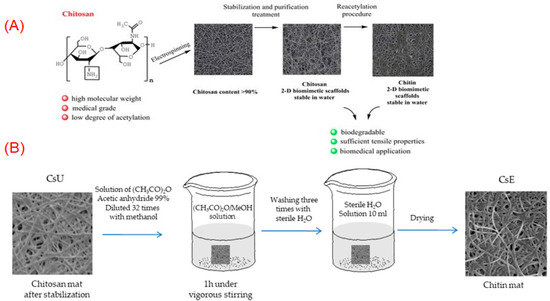Journal Description
Polysaccharides
Polysaccharides
is an international, peer-reviewed, open access journal on all aspects of the science of polysaccharides and their derivatives, published quarterly online by MDPI.
- Open Access— free for readers, with article processing charges (APC) paid by authors or their institutions.
- High Visibility: indexed within ESCI (Web of Science), Scopus, FSTA, CAPlus / SciFinder, and other databases.
- Rapid Publication: manuscripts are peer-reviewed and a first decision is provided to authors approximately 17.6 days after submission; acceptance to publication is undertaken in 3.9 days (median values for papers published in this journal in the second half of 2023).
- Recognition of Reviewers: APC discount vouchers, optional signed peer review, and reviewer names published annually in the journal.
Latest Articles
Two Important Biopolymers: The Transformative Power of Chitin and Collagen in Multidisciplinary Applications
Polysaccharides 2024, 5(2), 96-99; https://doi.org/10.3390/polysaccharides5020007 - 17 Apr 2024
Abstract
►
Show Figures
Biopolymers are natural polymers produced by living organisms’ cells, and have promising multidisciplinary applications [...]
Full article
Open AccessArticle
Surface Modification of Cellulose Nanocrystal Films via RAFT Polymerization for Adsorption of PFAS
by
Chaimaa Gomri, Belkacem Tarek Benkhaled, Arnaud Chaix, Eddy Petit, Marc Cretin and Mona Semsarilar
Polysaccharides 2024, 5(2), 85-95; https://doi.org/10.3390/polysaccharides5020006 - 13 Apr 2024
Abstract
►▼
Show Figures
Cellulose nanocrystals (CNCs) are bio-based materials able to be functionalized following different approaches, which expands their range of applications. One such approach is surface-initiated polymerization, which involves the attachment of an initiator to the CNC’s surface to initiate the growth of the polymer.
[...] Read more.
Cellulose nanocrystals (CNCs) are bio-based materials able to be functionalized following different approaches, which expands their range of applications. One such approach is surface-initiated polymerization, which involves the attachment of an initiator to the CNC’s surface to initiate the growth of the polymer. This work reports the modification of CNCs using the described approach. First, a CNC-based film was prepared, on which an initiator (RAFT agent) was grafted, and then (trimethylaminoethyl methacrylate, a positively charged monomer, was polymerized using reversible addition–fragmentation chain-transfer (RAFT) polymerization. The CNC film was successfully modified and fully characterized. Different degrees of polymerization were targeted to emphasize the effect of the positively charged polymer and their chain length on the adsorption efficiency. The results showed that by increasing the chain length of the grafted polymer, up to 80% of both pollutants could be removed, with a faster adsorption of PFOS as compared to PFOA.
Full article

Graphical abstract
Open AccessArticle
Concentrated O/W Emulsion Stability of Non-Ionic Chitosan Oligomer Surfactants Modified by Epoxidized Fatty Chains at pH7: Influence of Emulsification Conditions
by
Steve Berthalon, Jérémy Frugier, Nathalie Azema, Claire Negrell and Ghislain David
Polysaccharides 2024, 5(2), 67-84; https://doi.org/10.3390/polysaccharides5020005 - 11 Apr 2024
Abstract
►▼
Show Figures
In this study, chitosan-based surfactants were synthesized by epoxy–amine chemistry to stabilize concentrated O/W emulsions at pH7. Chitosan was first depolymerized by nitrous deamination to obtain chitooligosaccharides (COS) with degrees of polymerization of 10 (DP10) and 20 (DP20). Then, three different epoxidized fatty
[...] Read more.
In this study, chitosan-based surfactants were synthesized by epoxy–amine chemistry to stabilize concentrated O/W emulsions at pH7. Chitosan was first depolymerized by nitrous deamination to obtain chitooligosaccharides (COS) with degrees of polymerization of 10 (DP10) and 20 (DP20). Then, three different epoxidized fatty chains, i.e., octyl/decyl glycidyl ether (C9), hexadecyl glycidyl ether (C16) and epoxidized cardanol (card), were grafted onto the amine groups of chitosan to form six amphiphilic structures. NMR measurements revealed grafting efficiencies ranging from 1 to 30% while HLB values ranged from 13 to 20. The relationships between these surfactant structures and their adsorption properties were investigated by tensiometric measurements, highlighting the need for a short hydrophilic moiety and high grafting efficiency to obtain the best adsorption. Subsequently, concentrated O/W emulsions (66% of oil) at pH7 were produced using COS-based surfactants and the impact of stirring time and speed during the emulsification process was described through rheological, droplet size and microscopy measurements. Finally, emulsions were stored over 2 months in order to study the destabilization phenomenon into the mixture, i.e., coalescence and creaming, by using laser granulometry and Turbiscan. Results demonstrated that stability could be enhanced by increasing emulsion viscosity, reducing droplet size or optimizing the adsorption layer at the O/W interfaces.
Full article
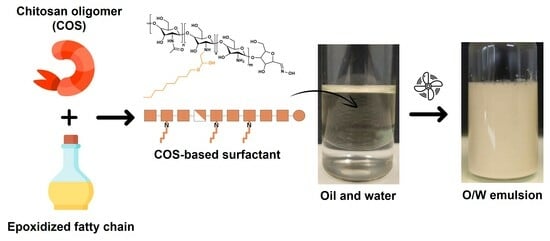
Graphical abstract
Open AccessArticle
Exploring the Potential of 3D-Printable Agar–Urea Hydrogels as an Efficient Method of Delivering Nitrogen in Agricultural Applications
by
Wathsala Dissanayake, Hossein Najaf Zadeh, Ali Reza Nazmi, Campbell Stevens, Tim Huber and Pramuditha L. Abhayawardhana
Polysaccharides 2024, 5(1), 49-66; https://doi.org/10.3390/polysaccharides5010004 - 07 Mar 2024
Abstract
►▼
Show Figures
Amidst population growth and challenges with existing fertilizers, the development of smart and environmentally friendly agrochemicals is imperative. While 3D printing is widespread, its potential in slow-release agrochemicals remains unexplored. This proof-of-concept study employed solvent casting and 3D printing to develop agar–urea structures.
[...] Read more.
Amidst population growth and challenges with existing fertilizers, the development of smart and environmentally friendly agrochemicals is imperative. While 3D printing is widespread, its potential in slow-release agrochemicals remains unexplored. This proof-of-concept study employed solvent casting and 3D printing to develop agar–urea structures. These structures, comprising 2.5% (w/w) agar, incorporated either 7% (w/w) or 13% (w/w) urea as nitrogen nutrients. Rheological, mechanical, and morphological properties and sorption capabilities were explored. Rheological analysis revealed a substantial impact of urea, enhancing material resistance to deformation. In mechanical tests, inclusion of urea showed no significant impact on compressive strength. SEM analysis confirmed the successful entrapment of urea within the agar matrix. The inclusion of urea resulted in a diminished water sorption capacity, attributed to the urea–water interactions disrupting the hydrogen bonding ability of agar. Agar–urea inks were employed in 3D printing utilizing the direct-ink writing technique, and the nitrogen release behavior was investigated. Results revealed nearly complete urea release in the positive control within 48 h. In contrast, agar–urea formulations with 7% (w/w) and 13% (w/w) achieved nitrogen release rates of 88.8% and 94.4%, respectively, suggesting potential for 3D-printed agar formulations to modify the immediate release behavior seen in conventional urea fertilizers.
Full article
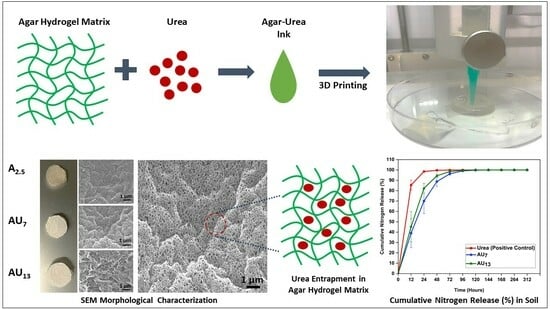
Graphical abstract
Open AccessArticle
A Polysaccharide-Based Integrated Nutrient Management System Enhances the Antioxidant Properties in Origanum dictamnus (Lamiaceae), a Valuable Local Endemic Plant of Crete
by
Konstantinos Paschalidis, Dimitrios Fanourakis, Georgios Tsaniklidis, Vasileios A. Tzanakakis, Ioanna Kardamaki, Fotis Bilias, Eftihia Samara, Ioannis Ipsilantis, Katerina Grigoriadou, Theodora Matsi, Georgios Tsoktouridis and Nikos Krigas
Polysaccharides 2024, 5(1), 28-48; https://doi.org/10.3390/polysaccharides5010003 - 26 Feb 2024
Abstract
►▼
Show Figures
Origanum dictamnus L. (Lamiaceae), a local endemic plant of Crete (Greece), creates polysaccharide-containing subcuticular compartments presenting biological activity against phytopathogenic fungi, and, among others, significantly affects the fungal cell wall polysaccharides. This field study introduces a fertilization scheme for O. dictamnus, which
[...] Read more.
Origanum dictamnus L. (Lamiaceae), a local endemic plant of Crete (Greece), creates polysaccharide-containing subcuticular compartments presenting biological activity against phytopathogenic fungi, and, among others, significantly affects the fungal cell wall polysaccharides. This field study introduces a fertilization scheme for O. dictamnus, which was developed and refined to optimize the yield as well as critical herbal quality aspects. Five fertilization schemes were investigated, based on a polysaccharide-based Integrated Nutrient Management (INM), a mixture of conventional inorganic fertilizers (ChF) and two biostimulants (not algae) via foliar and soil application. Plant growth, together with leaf chlorophyll fluorescence and color (SPAD meter, DA meter, Chroma Meter) were determined. The leaf content of chlorophyll, three critical antioxidant compounds (carotenoids, flavonoids, phenols) and nutrients were also assessed. Considering all three antioxidants together, the enhanced efficiency, non-toxic, water-soluble, polysaccharide-based INM by foliar application was the most stimulatory scheme, playing an important role in plant growth and development. The present field study provides, for the first time, baseline fertilization data improving key herbal quality features in O. dictamnus and unravels the attainment of high antioxidant properties. The latter may be exploited in favor of its further utilization as a raw material for tea preparation, medicinal purposes, natural food flavoring and/or food preservative.
Full article
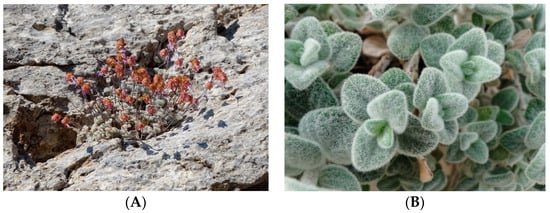
Figure 1
Open AccessArticle
Characterization of Lignocellulose Nanofibril from Desilicated Rice Hull with Carboxymethylation Pretreatment
by
Audrey Zahra, Seo-Kyoung Lim and Soo-Jeong Shin
Polysaccharides 2024, 5(1), 16-27; https://doi.org/10.3390/polysaccharides5010002 - 22 Jan 2024
Abstract
Rice hulls have a high-value potential, and the lignocellulose components are underutilized compared to other biomass resources. Pretreatments such as carboxymethylation of the degree of substitutions (DS) are used to prepare lignocellulose nanofibril (LCNF) from desilicated rice hull (DSRH). High-pressure homogenization (HPH) and
[...] Read more.
Rice hulls have a high-value potential, and the lignocellulose components are underutilized compared to other biomass resources. Pretreatments such as carboxymethylation of the degree of substitutions (DS) are used to prepare lignocellulose nanofibril (LCNF) from desilicated rice hull (DSRH). High-pressure homogenization (HPH) and grinding are used to process nano fibrillation. The composition of LCNF DS of desilicated rice hull was identified using 1H NMR for polysaccharide composition and DS determination, acetone and hot water extraction to evaluate extractives, and Klason lignin for lignin content. LCNF was prepared using various DS from 0.2 until DS 0.4. The results showed that LCNF DS has a more than −30 mV zeta potential, suitable for stable nanoemulsion formulations. The particle size of LCNF DS decreases with an increasing carboxyl content in the hydrogel and an increasing number of passes through grinding and high-pressure homogenization, of which LCNF DS 0.4 had the smallest width and length. Mechanical processes further reduced the size.
Full article
(This article belongs to the Topic Polymers from Renewable Resources, 2nd Volume)
►▼
Show Figures
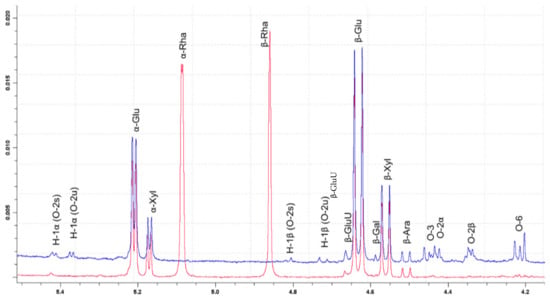
Figure 1
Open AccessArticle
Labeling of Polysaccharides with Biotin and Fluorescent Dyes
by
Alexander Tuzikov, Nadezhda Shilova, Tatiana Ovchinnikova, Alexey Nokel, Olga Patova, Yuriy Knirel, Tatiana Chernova, Tatiana Gorshkova and Nicolai Bovin
Polysaccharides 2024, 5(1), 1-15; https://doi.org/10.3390/polysaccharides5010001 - 27 Dec 2023
Abstract
►▼
Show Figures
Examples of labeling polysaccharides at hydroxyl groups are described in this paper, which are especially in demand for molecules with a blocked reducing end. The protocols presented are suitable for the microscale synthesis of labeled polysaccharides that do not require a chromatography step
[...] Read more.
Examples of labeling polysaccharides at hydroxyl groups are described in this paper, which are especially in demand for molecules with a blocked reducing end. The protocols presented are suitable for the microscale synthesis of labeled polysaccharides that do not require a chromatography step for isolation. Examples of hydroxyl labeling include (1) direct modification with fluorescein isothiocyanate; (2) reaction with a fluorescein-dichlorotriazine derivative; (3) reaction with biotin-dichlorotriazine; (4) indirect two-step modification (given for glycosphingolipid) with glutaric anhydride followed by amidation with aminospacered BODIPY or SuCy5. The labeling of carboxyl groups of hyaluronic acid with BODIPY is also described. The staining of plant tissue sections with biotinylated polysaccharide versus being fluorescein labeled is compared.
Full article
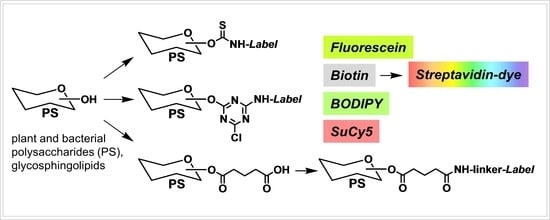
Graphical abstract
Open AccessArticle
Efficient (Bio)emulsification/Degradation of Crude Oil Using Cellulose Nanocrystals
by
Petr Sitnikov, Philipp Legki, Mikhail Torlopov, Yulia Druz, Vasily Mikhaylov, Dmitriy Tarabukin, Irina Vaseneva, Maria Markarova, Nikita Ushakov and Elena Udoratina
Polysaccharides 2023, 4(4), 402-420; https://doi.org/10.3390/polysaccharides4040024 - 10 Nov 2023
Abstract
►▼
Show Figures
This study has investigated the influence of cellulose nanocrystals (CNCs) with partially acetylated surfaces on the formation, stability, rheology and biodegradability of the Pickering emulsion in a crude oil/water (co/w) system. In all investigated systems, it was observed that the CNC concentrations of
[...] Read more.
This study has investigated the influence of cellulose nanocrystals (CNCs) with partially acetylated surfaces on the formation, stability, rheology and biodegradability of the Pickering emulsion in a crude oil/water (co/w) system. In all investigated systems, it was observed that the CNC concentrations of 7 mg/mL led to the emulsions showing stability over time. It was also noticed that the increase in concentration of background electrolyte (NaCl) leds to the droplets of emulsions becoming smaller. It was demonstrated that the rheology of the o/w emulsions of the oil products and crude oil stabilized by CNCs depends, to a large extent, on the colloid chemical properties of nanocellulose particles. Calculations and experimental methods were used to study the changes in the acid–base properties of CNCs on the surface of emulsion droplets, depending on a type of hydrophobic components (crude oil and liquid paraffin). The formation of Pickering emulsions leads to the oxidation of oil by Rhodococcus egvi in aerobic conditions becoming more effective, provided that the environment includes mineral salts of nitrogen, potassium and phosphorus. The results obtained present a scientific basis for the development of technologies for the disposal of oil spills on water surfaces.
Full article
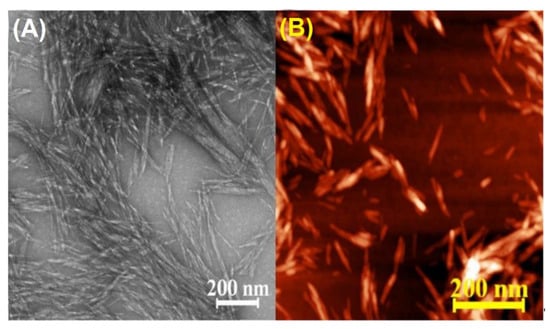
Figure 1
Open AccessArticle
Advancing Paper Industry Applications with Extruded Cationic Wheat Starch as an Environmentally Friendly Biopolymer
by
Ahmed Tara
Polysaccharides 2023, 4(4), 390-401; https://doi.org/10.3390/polysaccharides4040023 - 02 Nov 2023
Abstract
►▼
Show Figures
Within the domain of starch modification, the study delved into cationization of wheat starch through a laboratory-scale twin-screw extruder, exploring various processing conditions. Cationic starch, a crucial component for enhancing paper attributes like dry strength and printability, took center stage. The focus shifted
[...] Read more.
Within the domain of starch modification, the study delved into cationization of wheat starch through a laboratory-scale twin-screw extruder, exploring various processing conditions. Cationic starch, a crucial component for enhancing paper attributes like dry strength and printability, took center stage. The focus shifted towards integration into papermaking, investigating the transformative potential of reactive extrusion. By contrasting it with conventional dry-process methodology, innovative strides were unveiled. The study extended to pilot-scale extrusion, bridging the gap between laboratory experimentation and potential industrial implementation. Infused with scientific rigor, the investigation navigated the benefits brought about by reactive extrusion. Empirical insights highlighted a significant reduction in the intrinsic viscosity of extruded starch, decreasing from 170 mL·g−1 (native starch) to 100 mL·g−1 at a specific mechanical energy (SME) input of 800 kWh·t−1, demonstrating remarkable stability despite increased mechanical treatment. Moreover, beyond the critical threshold of 220 kWh·t−1, retention efficiency reached a stable plateau at 78%. The study revealed that utilizing a larger extruder slightly improved the mechanical properties of the paper, emphasizing the advantage of scaling up the production process and the consistency of results across different extruder sizes.
Full article
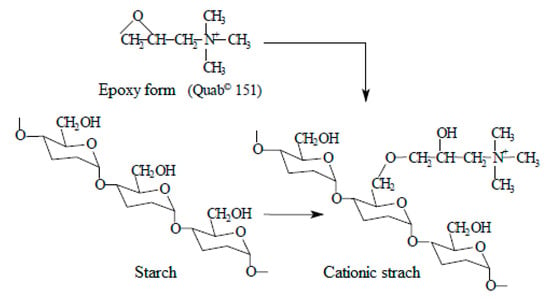
Figure 1
Open AccessReview
Algal Polysaccharides-Based Nanomaterials: General Aspects and Potential Applications in Food and Biomedical Fields
by
Juliana Botelho Moreira, Thaisa Duarte Santos, Camila Gonzales Cruz, Jéssica Teixeira da Silveira, Lisiane Fernandes de Carvalho, Michele Greque de Morais and Jorge Alberto Vieira Costa
Polysaccharides 2023, 4(4), 371-389; https://doi.org/10.3390/polysaccharides4040022 - 04 Oct 2023
Abstract
The use of natural polymers has increased due to concern about environmental pollution caused by plastics and emerging pollutants from fossil fuels. In this context, polysaccharides from macroalgae and microalgae arise as natural and abundant resources for various biological, biomedical, and food applications.
[...] Read more.
The use of natural polymers has increased due to concern about environmental pollution caused by plastics and emerging pollutants from fossil fuels. In this context, polysaccharides from macroalgae and microalgae arise as natural and abundant resources for various biological, biomedical, and food applications. Different nanomaterials are produced from these polysaccharides to act as effective carriers in the food and pharmaceutical industry: drug and nutrient carriers, active compound encapsulation, and delivery of therapeutic agents to tumor tissues. Polysaccharides-based nanomaterials applied as functional ingredients incorporated into foods can improve texture properties and decrease the caloric density of food products. These nanostructures also present the potential for developing food packaging with antioxidant and antimicrobial properties. In addition, polysaccharides-based nanomaterials are biocompatible, biodegradable, and safe for medical practices to prevent and manage various chronic diseases, such as diabetes, obesity, and cardiovascular disease. In this sense, this review article addresses the use of algal polysaccharides for manufacturing nanomaterials and their potential applications in food and biomedical areas. In addition, the paper discusses the general aspects of algae as a source of polysaccharides, the nanomaterials produced from these polymers, as well as recent studies and the potential use of algal polysaccharides for industries.
Full article
(This article belongs to the Collection Current Opinion in Polysaccharides)
►▼
Show Figures

Figure 1
Open AccessArticle
Enzymatic Treatment of Ferulated Arabinoxylans from Distillers Dried Grains with Solubles: Influence on the Fabrication of Covalent Electro-Sprayed Nanoparticles
by
Yubia De Anda-Flores, Jaime Lizardi-Mendoza, Agustín Rascón-Chu, Judith Tanori-Cordova, Ana Luisa Martínez-López and Elizabeth Carvajal-Millan
Polysaccharides 2023, 4(4), 358-370; https://doi.org/10.3390/polysaccharides4040021 - 02 Oct 2023
Abstract
►▼
Show Figures
Arabinoxylans (AXs) extracted from distillers dried grains with solubles (DDGSs) were treated with amylase, amyloglucosidase, and protease, to evaluate their effect on the polysaccharide capability to form covalent electro-sprayed nanoparticles. Enzymatically treated arabinoxylans (AXPPs) presented a significant decrease in protein content and molecular
[...] Read more.
Arabinoxylans (AXs) extracted from distillers dried grains with solubles (DDGSs) were treated with amylase, amyloglucosidase, and protease, to evaluate their effect on the polysaccharide capability to form covalent electro-sprayed nanoparticles. Enzymatically treated arabinoxylans (AXPPs) presented a significant decrease in protein content and molecular weight (31 and 37%, respectively), while the ferulic acid content and the arabinose-to-xylose ratio (A/X) were not statistically modified. The Fourier transform infrared spectra of the AXPPs showed a diminution in the intensity of amide I and amide II bands concerning AXs. The AXPP gels (1% w/v) induced via laccase registered a slight increase in the dimers of ferulic acid cross-linking content (9%) and the G’ value (27%) about the AX gels. The electro-sprayed nanoparticles of AXs and AXPPs (NAXs and NAXPPs, respectively) revealed a spherical and regular morphology via transmission electron microscopy. The nanoparticle diameter was not different for the NAXs and NAXPPs, while the NAXPPs show a significant reduction in Z potential value compared to NAXs. Confocal laser microscopy observations were conducted, to analyze the protein content in the AX network, and a decrease in illuminated areas was observed in the AXPP gels and the NAXPPs. These results indicate that the enzymatical treatment of an AX improves the polysaccharide gelling capability, but does not influence the fabrication of electro-sprayed covalent nanoparticles. NAXs and NAXPPs could be attractive biomaterials for diverse pharmaceutical and biomedical applications.
Full article
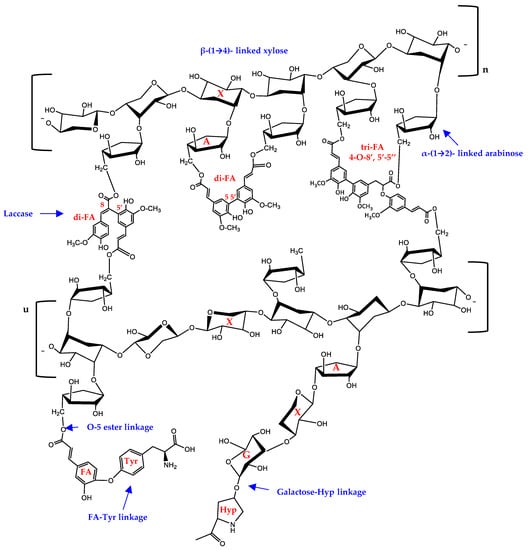
Figure 1
Open AccessArticle
In Vitro Biological Properties of Cyclodextrin-Based Polymers: Interaction with Human Serum Albumin, Red Blood Cells and Bacteria
by
Linara R. Yakupova, Anna A. Skuredina, Tatina Yu. Kopnova and Elena V. Kudryashova
Polysaccharides 2023, 4(4), 343-357; https://doi.org/10.3390/polysaccharides4040020 - 28 Sep 2023
Cited by 2
Abstract
►▼
Show Figures
The aim of this work was to investigate the physico-chemical and biological properties of cyclodextrin-based polymers by the example of interaction with human serum albumin, erythrocytes, and bacteria to understand the prospects of their application as drug delivery systems. We synthesized polymers based
[...] Read more.
The aim of this work was to investigate the physico-chemical and biological properties of cyclodextrin-based polymers by the example of interaction with human serum albumin, erythrocytes, and bacteria to understand the prospects of their application as drug delivery systems. We synthesized polymers based on one of cyclodextrin derivatives with nonpolar (-CH3) or polar (-CH2CH(OH)CH3) substituents by crosslinking with 1,6-hexamethylene diisocyanate or succinic anhydride. The polymers form particles with an average size of ~200 nm in the aqueous solutions; their structures were confirmed by FTIR and 1H NMR. Cyclodextrin derivatives and their polymers did not affect the secondary structure content of human serum albumin, which might mean a mild effect on the structural and functional properties of the main blood plasma protein. Polymers extract drug molecules from albumin + drug complex by 8–10%, which was demonstrated using ibuprofen and bromophenol blue as model bioactive molecules for site I and site II in protein; thus, the nanoparticles might slightly change the drug’s pharmacokinetics. Using the hemolysis test, we found that polymers interact with red blood cells and can be assigned to non-hemolytic and slightly hemolytic groups as biocompatible materials, which are safe for in vivo use. The cyclodextrins and their polymers did not extract proteins from bacterial cell walls and did not demonstrate any antibacterial activity against Gram-positive and Gram-negative strains. Thus, the cyclodextrin-based polymers possess variable properties depending on the substituent in the monomer and linker type; demonstrated biocompatibility, biodegradability, and negligible toxicity that opens up prospects for their application in biomedicine and ecology.
Full article
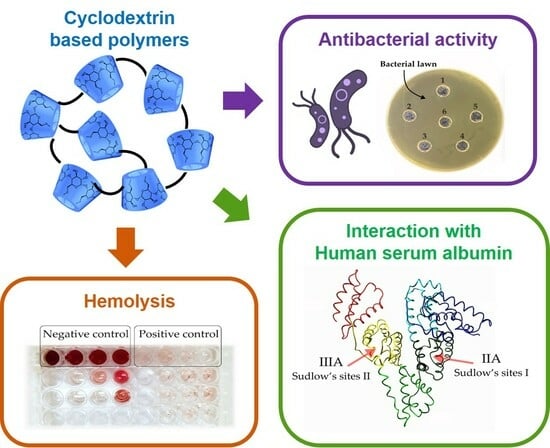
Graphical abstract
Open AccessArticle
Ecological Sorption of Iron and Sulfate Ions onto Starch and Chitosan Biopolymer Blend
by
Rahma Boughanmi, Christine Steinbach, Niklas Gerlach, Marina Oelmann, Christoph Beutner and Simona Schwarz
Polysaccharides 2023, 4(3), 325-342; https://doi.org/10.3390/polysaccharides4030019 - 12 Sep 2023
Abstract
►▼
Show Figures
Providing safe drinking water free of heavy metal ions like iron and oxyanions like sulfate has become a worldwide issue. Starch, as one of the widely cheapest and available biomaterials, has demonstrated its capability to adsorb heavy metal ions from water in various
[...] Read more.
Providing safe drinking water free of heavy metal ions like iron and oxyanions like sulfate has become a worldwide issue. Starch, as one of the widely cheapest and available biomaterials, has demonstrated its capability to adsorb heavy metal ions from water in various scientific research, but in low adsorption rates. Therefore, this paper aims to prepare a biopolymer based on a starch–chitosan blend to raise the adsorption efficiency of starch. Two types of chitosan were used to modify potato starch (ps): low molecular chitosan (ch60) and high molecular chitosan (ch4000). Nano potato starch (n.ps) was prepared from potato starch and was also modified with both chitosans. The surface property, the morphology, the particle size, and the structure of the samples were analyzed. Moreover, the investigation of the samples by the zeta potential and charge density were evaluated to determine the charge of the adsorbents’ surface. Furthermore, the pseudo first order (PFO) and pseudo second order (PSO) were employed to examine the adsorption kinetic. The adsorption isotherms of Fe2+/3+ and SO42− were fitted employing Langmuir, Sips, and Dubinin-Radushkevich adsorption models. The maximum achieved sorption capacities from the FeSO4 solution for Fe2+/3+ were as follows: 115 mg/g for n.ps & ch4000, 90 mg/g for ps & ch4000, 80 mg/g for n.ps & ch60, and 61 mg/g for ps & ch60. Similarly, for SO42−, it was 192 mg/g for n.ps & ch4000, 155 mg/g for n.ps & ch60, 137 mg/g for ps & ch4000, and 97 mg/g for ps & ch60.
Full article
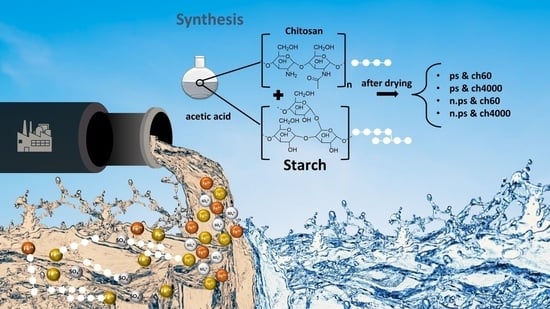
Graphical abstract
Open AccessReview
pH Effects on the Conformations of Galacturonan in Solution: Conformational Transition and Loosening, Extension and Stiffness
by
Sergio Paoletti and Ivan Donati
Polysaccharides 2023, 4(3), 271-324; https://doi.org/10.3390/polysaccharides4030018 - 08 Sep 2023
Abstract
►▼
Show Figures
Calorimetric (from both isothermal micro-calorimetry and DSC), chiro-optical, viscometric and rheological data on aqueous solutions of pectic acid and low-methoxyl pectin (LMP), published over decades from different laboratories, have been comparatively revisited. The aim was to arrive at a consistent and detailed description
[...] Read more.
Calorimetric (from both isothermal micro-calorimetry and DSC), chiro-optical, viscometric and rheological data on aqueous solutions of pectic acid and low-methoxyl pectin (LMP), published over decades from different laboratories, have been comparatively revisited. The aim was to arrive at a consistent and detailed description of the behavior of galacturonan as a function of pH, i.e., of the degree of charging (as degree of dissociation, α) of the polyanion. The previously hypothesized pH-induced transition from a 31 to a 21 helix was definitely confirmed, but it has been shown, for the first time, that the transition is always coupled with loosening/tightening effects brought about by an increase in charge. The latter property has a twofold effect: the former effect is a purely physical one (polyelectrolytic), which is always a loosening one. However, in the very low range of pH and before the beginning of the transition, an increase in charge tightens the 31 helix by strengthening an intramolecular—but inter-residue—hydrogen bond. The value of the enthalpy change of 31 → 21 transition—+0.59 kcal·mol−1—is bracketed by those provided by theoretical modeling, namely +0.3 and +0.8 kcal·mol−1; the corresponding entropy value is also positive: +1.84 cal·mole r.u.−1·K−1. The enthalpic and the entropic changes in chain loosening amount only to about 23% of the corresponding 31 → 21 changes, respectively. Much like poly(galacturonic acid), the 31 conformation of LMP also stiffens on passing from pH = 2.5 to 3.0, to then start loosening and transforming into the 21 one on passing to pH = 4.0. Lowering the pH of a salt-free aqueous solution of LMP down to 1.6 brings about a substantial chain–chain association, which is at the root of the interchain junctions stabilizing the acid pH gels, in full agreement with the rheological results. A comparison of the enthalpic data reveals that, at 85 °C, LMP in acidic pH conditions has lost its initial order by about 2.3 times more than pectic acid brought from low charging to full neutralization (at α = 1.0) at 25 °C. A proper combination of experiments (enthalpic measurements) and theory (counterion condensation polyelectrolyte theory) succeeded in demonstrating, for the first time ever, a lyotropic/Hofmeister effect of the anion perchlorate in stabilizing the more disordered form of the 21 helix of galacturonan. The viscometric results in water showed that the 31 helix is capable of forming longer rheologically cooperative units compared with the 21 helix. Extrapolation to infinite ionic strength confirmed that, once all electrostatic interactions are cancelled, the elongation of the two helical forms is practically the same. At the same time, however, they indicated that the flexibility of the two-fold helix is more than fifteen times larger than that of the three-fold one. The result is nicely corroborated by a critical revisiting of 23Na relaxation experiments.
Full article
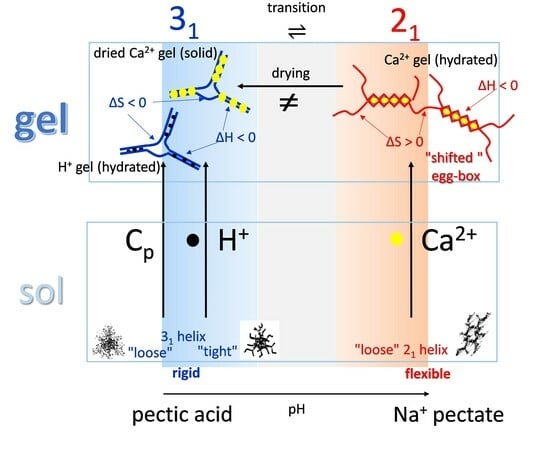
Graphical abstract
Open AccessArticle
Lactic Acid Fermentation of Carrageenan Hydrolysates from the Macroalga Kappaphycus alvarezii: Evaluating Different Bioreactor Operation Modes
by
Adam Tabacof, Verônica Calado and Nei Pereira, Jr.
Polysaccharides 2023, 4(3), 256-270; https://doi.org/10.3390/polysaccharides4030017 - 30 Aug 2023
Abstract
Lactic acid is a molecule used abundantly in the food, cosmetic, and pharmaceutical industries. It is also the building block for polylactic acid, a biodegradable polymer which has gained interest over the last decade. Seaweeds are fast growing, environmentally friendly, and economically beneficial.
[...] Read more.
Lactic acid is a molecule used abundantly in the food, cosmetic, and pharmaceutical industries. It is also the building block for polylactic acid, a biodegradable polymer which has gained interest over the last decade. Seaweeds are fast growing, environmentally friendly, and economically beneficial. The Rhodophyta, Kappaphycus alvarezii, is a carrageenan-rich alga, which can be successfully fermented into lactic acid using lactic acid bacteria. Lactobacillus pentosus is a versatile and robust bacterium and an efficient producer of lactic acid from many different raw materials. Bioreactor strategies for lactic acid fermentation of K. alvarezii hydrolysate were tested in 2-L stirred-tank bioreactor fermentations, operating at 37 °C, pH 6, and 150 rpm. Productivity and yields were 1.37 g/(L.h) and 1.17 g/g for the pulse fed-batch, and 1.10 g/(L.h) and 1.04 g/g for extended fed-batch systems. A 3.57 g/(L.h) production rate and a 1.37 g/g yield for batch fermentation operating with an inoculum size of 0.6 g/L was recorded. When applying fed-batch strategies, fermentation products reached 91 g/L with pulse feed and 133 g/L with constant continuous feed. For control and comparison, a simple batch of synthetic galactose-rich Man-Sharpe-Rugosa (MRS) media was fermented at the same conditions. A short study of charcoal regenerability is shown. A scheme for a third-generation lactic acid biorefinery is proposed, envisioning a future sustainable large-scale production of this important organic acid.
Full article
(This article belongs to the Special Issue New Insights into the Production of Polysaccharides and Their Derivatives for Challenging Sustainable Development)
►▼
Show Figures
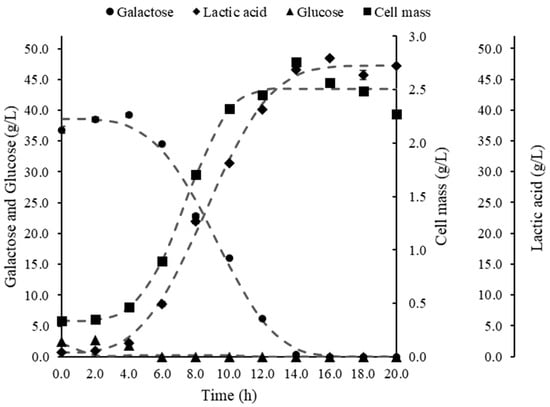
Figure 1
Open AccessReview
Polysaccharides as Economic and Sustainable Raw Materials for the Preparation of Adsorbents for Water Treatment
by
Gema Díaz Bukvic, Ezequiel Rossi and María Inés Errea
Polysaccharides 2023, 4(3), 219-255; https://doi.org/10.3390/polysaccharides4030016 - 20 Aug 2023
Abstract
Adsorption processes, due to their technical simplicity and cost-effectiveness, have arisen as one of the most well-known, straightforward solutions to water pollution. In this context, polysaccharides, due to their abundance, biodegradability, and biocompatibility, are appealing raw materials for the design of adsorbents. Moreover,
[...] Read more.
Adsorption processes, due to their technical simplicity and cost-effectiveness, have arisen as one of the most well-known, straightforward solutions to water pollution. In this context, polysaccharides, due to their abundance, biodegradability, and biocompatibility, are appealing raw materials for the design of adsorbents. Moreover, some of them, such as chitosan, can be obtained from organic waste products, and their use additionally contributes to solving another concerning problem: organic waste accumulation. Unfortunately, due to their low adsorption capacities and/or physicochemical properties, native polysaccharides are not suitable for this purpose. However, there are alternatives that can overcome these physical or chemical limitations, often taking advantage of the versatility of their polyhydroxylated structure. In this context, this review aims to present an overview of the advances from 2019 onwards in the design of new adsorbents for water treatment from cellulose, alginate, chitosan, and starch, addressing the two main strategies reported in the literature: the preparation of either polysaccharide-based composites or polysaccharide derivatives. It is important to point out that, herein, special emphasis is placed on the relationship between the chemical structure and the efficiency as adsorbents of the analyzed materials, in an attempt to contribute to the rational design of adsorbents obtained from polysaccharides.
Full article
(This article belongs to the Special Issue New Insights into the Production of Polysaccharides and Their Derivatives for Challenging Sustainable Development)
►▼
Show Figures
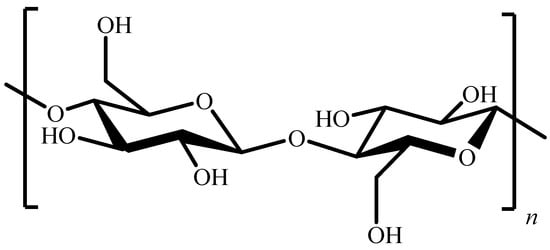
Figure 1
Open AccessArticle
Effect of Amylopectin Content on Mechanical, Barrier and Thermal Properties of Plasticized Starch/Chitosan Films
by
Marilia M. Horn, Virginia C. A. Martins and Ana M. G. Plepis
Polysaccharides 2023, 4(3), 208-218; https://doi.org/10.3390/polysaccharides4030015 - 24 Jul 2023
Abstract
►▼
Show Figures
Mechanical, barrier, and thermal properties of films based on blends of corn starch and chitosan plasticized with ethylene glycol, glycerol, and sorbitol were investigated. Starch amylopectin variation was explored, and contents of 100% and 73% were employed to blend with chitosan and polyols.
[...] Read more.
Mechanical, barrier, and thermal properties of films based on blends of corn starch and chitosan plasticized with ethylene glycol, glycerol, and sorbitol were investigated. Starch amylopectin variation was explored, and contents of 100% and 73% were employed to blend with chitosan and polyols. The findings showed that high amylopectin content has a significant effect (p < 0.05), resulting in films with lower tensile strength (TS) and reduced water vapor permeability (WVP). On the other hand, the incorporation of polyols showed a significantly high (p < 0.05) elongation at break (EB) for films plasticized with glycerol and sorbitol at high amylopectin content. For chitosan/73% amylopectin film, the addition of plasticizers exhibited no significant difference (p < 0.05) among the samples for TS and WVP results. The amylopectin content played no influence in the degradation stability of the films measured by thermogravimetry (TGA). However, amylopectin content influences the endothermic peak temperature observed by differential scanning calorimetry (DSC) analysis. A reduction of about 15 °C was noticed for the film prepared with high amylopectin content, a behavior correlated to its amorphous structure, capable of retaining more water than a crystalline region.
Full article
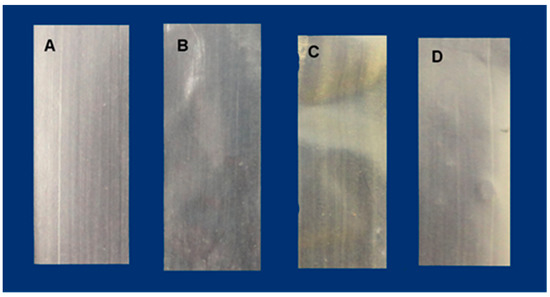
Figure 1
Open AccessArticle
Influence of Ultrasound on the Properties of Polysaccharide Complexes and Materials Based on Them
by
Elizaveta Mokhova, Mariia Gordienko, Natalia Menshutina, Sergei Kalenov, Igor Avetissov and Artyom Eremeev
Polysaccharides 2023, 4(3), 189-207; https://doi.org/10.3390/polysaccharides4030014 - 30 Jun 2023
Abstract
►▼
Show Figures
Freeze-drying is often used as a final stage to produce three-dimensional porous matrices for medicine. Because a pure solvent crystallizes first during freezing, it acts as a pore-forming agent. The size of the solvent crystals primarily depends on the cooling rate and the
[...] Read more.
Freeze-drying is often used as a final stage to produce three-dimensional porous matrices for medicine. Because a pure solvent crystallizes first during freezing, it acts as a pore-forming agent. The size of the solvent crystals primarily depends on the cooling rate and the composition of the material to be frozen. Ultrasonic treatment also affects the size of crystals and can be used to control the structure of a porous matrix. This article describes the effect of ultrasound (40 kHz, 50 W) applied at the preliminary freezing stage of polysaccharide solutions (alginate, chitosan, alginate–chitosan and alginate–gelatin) on the finished matrix properties. The most attention was paid to the effect of ultrasound on the size and shape of crystals formed during freezing, which leads to a change in the porous structure of the matrices after solvent sublimation. As a result of changes in the microstructure, a number of differences in the vibrational spectra of the molecules and the values of pore volume, sorption capacity, permeability and degradation of matrices were identified. Such changes in the structure of materials, as well as the emerging directionality of pores, together can affect the process of cell cultivation in these polysaccharide matrices, which can be useful in solving problems of tissue engineering.
Full article

Figure 1
Open AccessArticle
Xylan Solubilization from Partially Delignified Biomass, and Residual Lignin Removal from Solubilized Xylan
by
Ranieri Bueno Melati, Daiane Cristina Sass, Jonas Contiero and Michel Brienzo
Polysaccharides 2023, 4(2), 176-188; https://doi.org/10.3390/polysaccharides4020013 - 09 Jun 2023
Cited by 3
Abstract
►▼
Show Figures
Xylan is a macromolecule of industrial interest that can be solubilized from lignocellulosic materials, such as sugarcane bagasse, which is a renewable source. However, the solubilization methods of xylan need to be better developed for use in industrial applications. The main objective of
[...] Read more.
Xylan is a macromolecule of industrial interest that can be solubilized from lignocellulosic materials, such as sugarcane bagasse, which is a renewable source. However, the solubilization methods of xylan need to be better developed for use in industrial applications. The main objective of this study was to evaluate xylan solubilization methods with higher yields and purity by using biomasses/fractions of sugarcane: leaf and stem, internode, node, and external fraction. Two strategies were evaluated by applying diluted sodium chlorite, sodium sulfite, and hydrogen peroxide: a delignification of the biomass before xylan solubilization; and the delignification of the solubilized xylan for residual lignin removal. The delignification of the biomass before the xylan solubilization enabled to identify material and specific conditions for yields higher than 90%. Residual lignin varied from 3.14 to 18.06%, with hydrogen peroxide in alkaline medium partial delignification shown to be effective. The delignification of xylan presented better results using diluted hydrogen peroxide, with a reduction of 58.44% of the initial lignin content. The solubilized xylans were used as a substrate for xylanase activities, resulting in higher activity than commercial xylan. In the delignification of the biomasses, hydrogen peroxide was the reagent with better results concerning the yield, purity, and solubility of the xylan. This reagent (diluted) was also better in the delignification of the solubilized xylan, resulting in lower residual lignin content. The solubility and purity tests (low salt content) indicated that the solubilized xylan presented characteristics that were similar to or even better than commercial xylan.
Full article
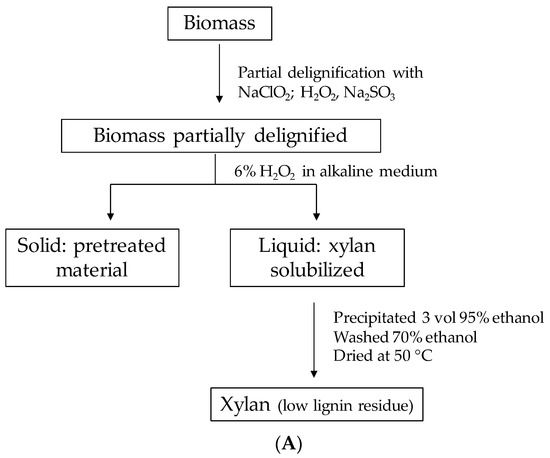
Figure 1
Open AccessReview
Post-Combustion Capture of Carbon Dioxide by Natural and Synthetic Organic Polymers
by
Sudip Kumar Ghosh and Moumita Ghosh
Polysaccharides 2023, 4(2), 156-175; https://doi.org/10.3390/polysaccharides4020012 - 31 May 2023
Abstract
►▼
Show Figures
The elevation of carbon dioxide (CO2) levels in the atmosphere is responsible for global warming which in turn causes abrupt climate change and consequently poses a threat to living organisms in the coming years. To reduce CO2 content in the
[...] Read more.
The elevation of carbon dioxide (CO2) levels in the atmosphere is responsible for global warming which in turn causes abrupt climate change and consequently poses a threat to living organisms in the coming years. To reduce CO2 content in the atmosphere CO2 capture and separation is highly necessary. Among various methods of CO2 capture post-combustion capture is very much useful because of its operational simplicity and applicability in many industries and power sectors, such as coal-fired power plants. Polymers with high surface area, high volume and narrow pores are ideal solid sorbents for adsorption-driven post-combustion CO2 capture. Natural polymers, such as polysaccharides are cheap, abundant, and can be modified by various methods to produce porous materials and thus can be effectively utilized for CO2 capture while the surface area and the pore size of synthetic porous organic polymers can be tuned precisely for high CO2 capturing capacity. A significant amount of research activities has already been established in this field, especially in the last ten years and are still in progress. In this review, we have introduced the latest developments to the readers about synthetic techniques, post-synthetic modifications and CO2 capture capacities of various biopolymer-based materials and synthetic porous organic polymers (POPs) published in the last five years (2018–2022). This review will be beneficial to the researchers to design smart polymer-based materials to overcome the existing challenges in carbon capture and storage/sequestration.
Full article
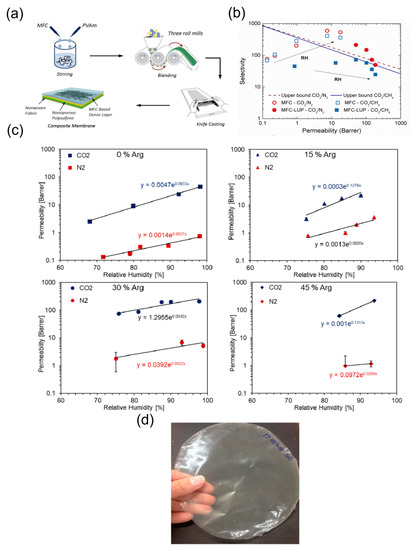
Figure 1
Highly Accessed Articles
Latest Books
E-Mail Alert
News
Topics
Topic in
Polymers, Polysaccharides, Sustainability, Sustainable Chemistry, Molecules
Polymers from Renewable Resources, 2nd Volume
Topic Editors: Valentina Siracusa, Nadia Lotti, Michelina Soccio, Alexey L. IordanskiiDeadline: 31 May 2024

Conferences
Special Issues
Special Issue in
Polysaccharides
Latest Research on Polysaccharides: Structure and Applications
Guest Editor: Cong WangDeadline: 30 June 2024
Topical Collections
Topical Collection in
Polysaccharides
Current Opinion in Polysaccharides
Collection Editors: Cédric Delattre, Paolina Lukova, Guillaume Pierre


